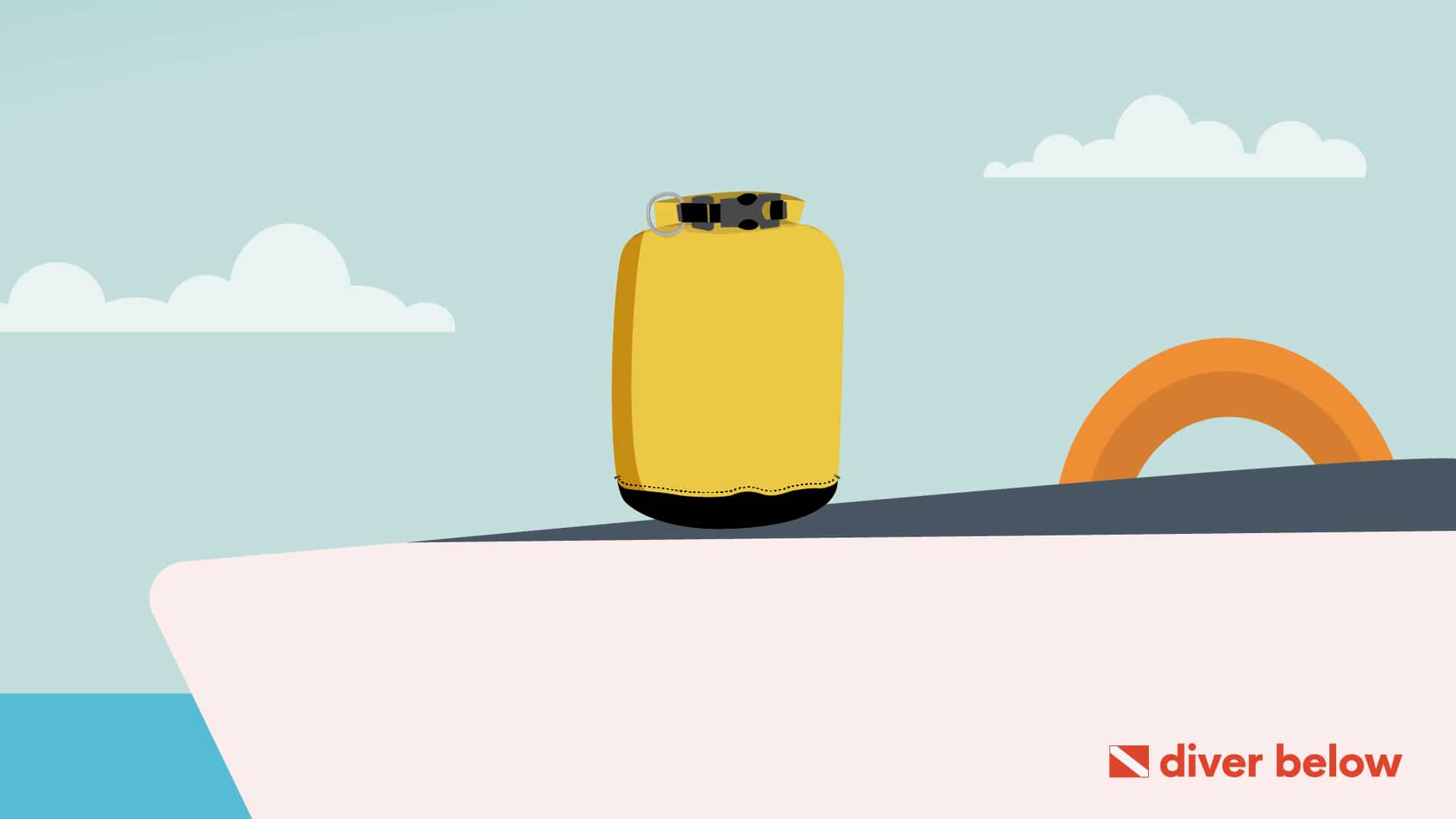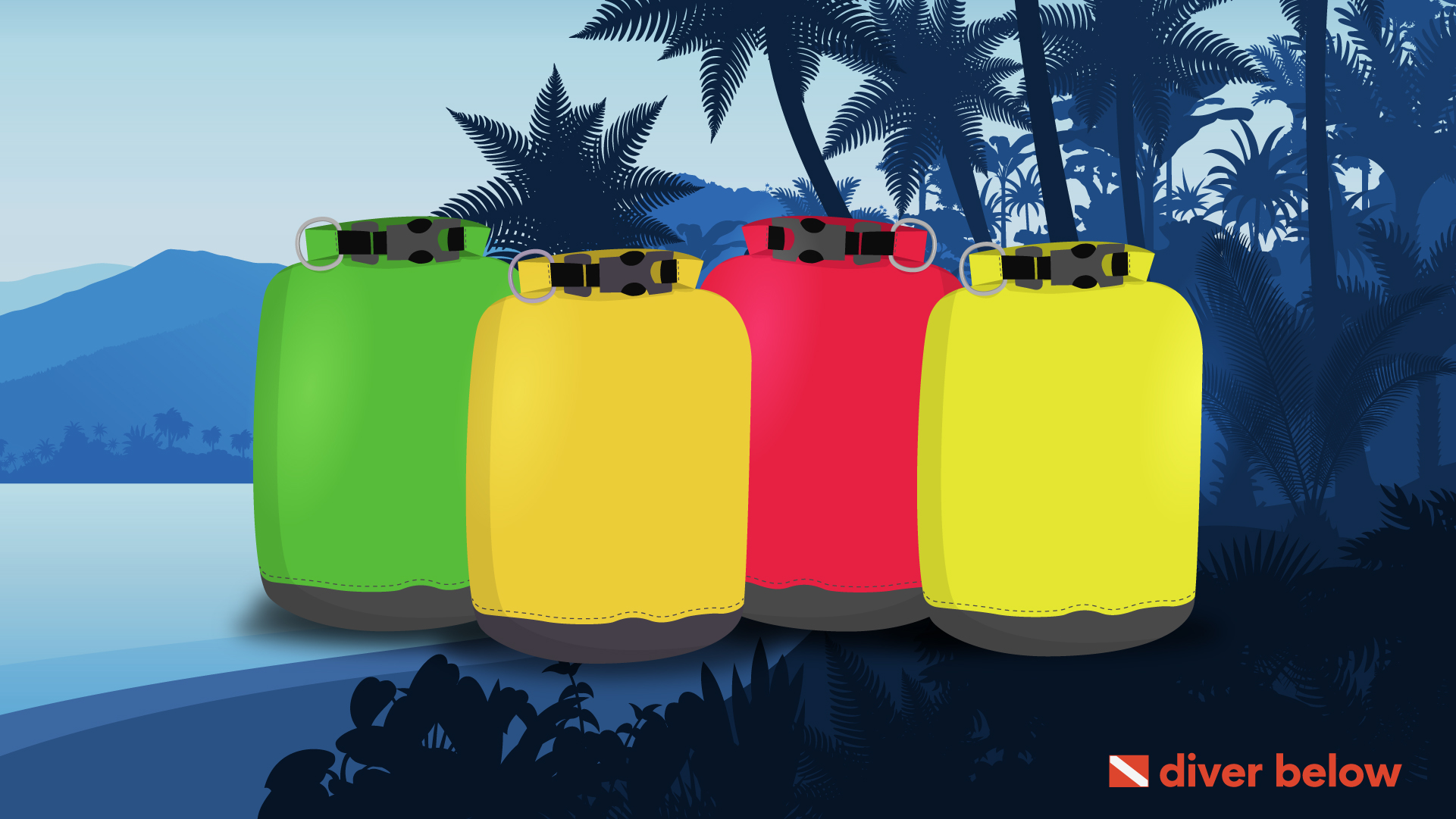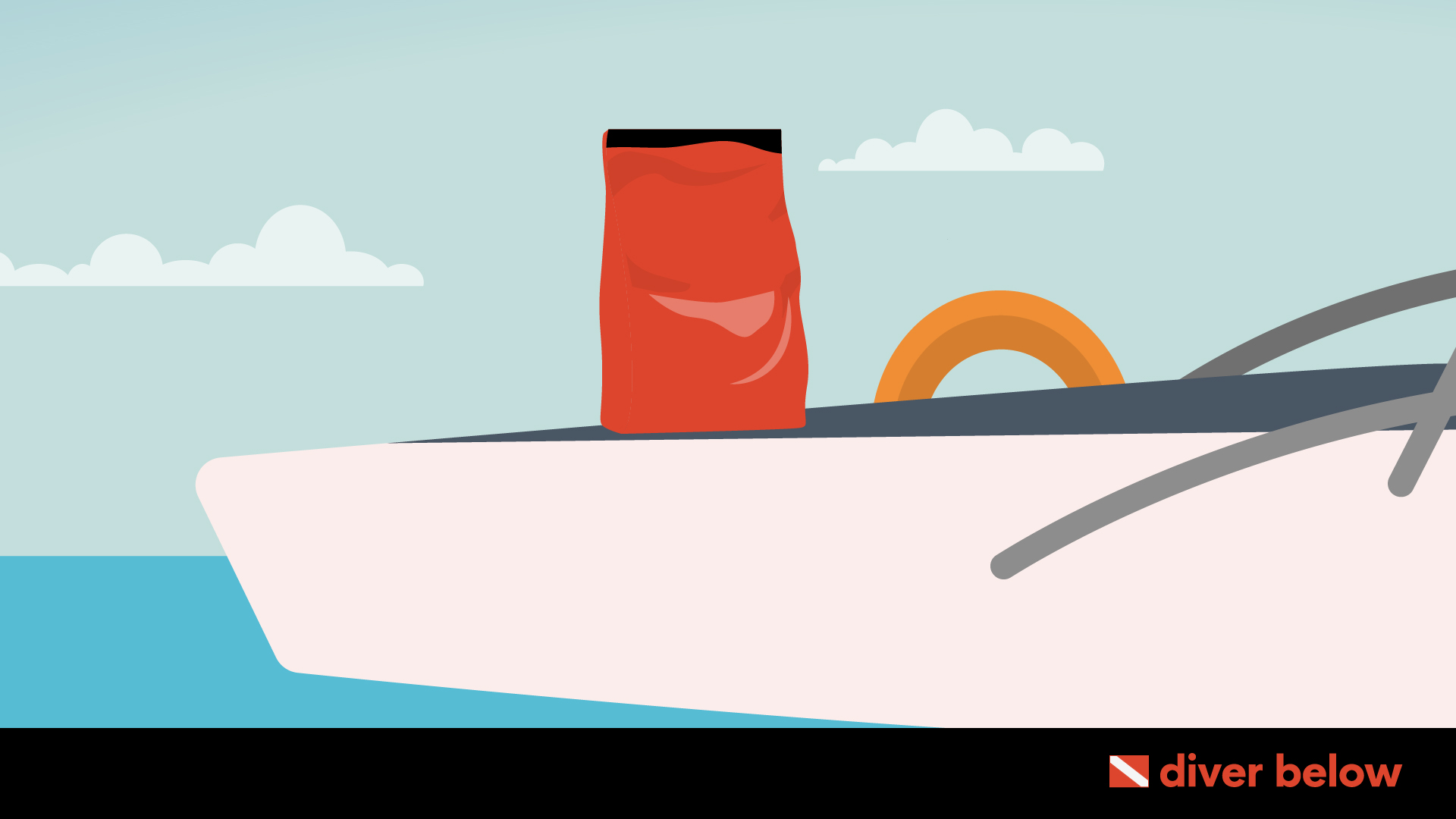When going on an outdoor adventure, a dry bag is an essential item you cannot afford to leave behind.
It saves you from the horror of opening your luggage to find your items soaked in water.
With a dry bag in tow, you can enjoy your activities in water or wet conditions without worrying about your luggage.
Contents
What is a Dry Bag?

A dry bag is a lightweight, flexible type of luggage specifically made to keep contents dry.
Dry bags are available in different sizes, weights, colors and perform well in extreme wet outdoor conditions.
Manufacturers mainly use high-density nylon or vinyl to make dry bags.
These materials are sturdy enough to withstand outdoor conditions.
Usually, the interior has a waterproof coating like polyurethane.
In addition to these sturdy and waterproof materials, dry bags come with roll-top closures that form a watertight seal when in use.
These qualities make dry bags better options than freezer bags which are less sturdier and less waterproof.
How Do Dry Bags Work?
Dry bags work by keeping items dry and safe.
They can do this due to the thick, durable, and waterproof materials used in their construction.
Although these bags are ultralight, they’re robust and sturdy enough to withstand outdoor conditions.
The closure system at the top seals tightly and keeps water out.
This closing method is unlike other types of camping luggage with zippers that are only water-resistant.
Are Dry Bags Waterproof?
Yes, dry bags are waterproof.
This feature is what differentiates them from regular hiking backpacks.
Their waterproof quality makes them suitable for outdoor activities involving water, such as whitewater rafting and kayaking.
Even when you’re not going on a water adventure, a waterproof dry bag protects from moisture in case of wet weather.
Are Dry Bags Submersible?
Waterproof dry bags are submersible only to a certain level.
For instance, they can float in water and still keep the items inside dry.
But, this is not guaranteed if you fully submerge the bag.
If you have to, only keep it in the water for a short moment.
Otherwise, you risk getting water inside.
Are Dry Bags Odor Proof?
High-quality dry bags that are waterproof are also odor-proof due to the thick plastic materials used in their construction.
Having an odor-proof dry bag is crucial when it comes to animal-proofing your campsite.
When you pack your food or other fragrant items in a dry bag, there’s little chance that a bear or other animal can catch the smell.
What Is a Dry Bag Used for?
Dry bags are versatile, allowing use in a variety of settings.
First, you can use it to carry gear that is sensitive to moisture, such as DSLR cameras, which can get ruined when exposed to too much water.
Dry bags are also perfect for packing clothes.
Even when your luggage gets drenched in the rain, you can rest assured that the clothes inside your luggage are dry.
Campers also use dry bags to store and carry food.
Smaller dry bags are perfect for carrying food containers.
You can opt to have your food separately in a small dry bag or throw the containers in a larger bag alongside other items.
Besides packing items, your dry bag backpack can also double up as a pillow when resting in the wild or a water bucket when fishing.
Common Activities to Use a Dry Bag for
Most of the outdoor activities where dry bags are necessary are water-related.
But, even if you’re not planning on going into the water, the bag provides protection in wet weather.
The sturdiness of the bag is also an added advantage in the rough outdoor terrain and surroundings.
The following are some common activities to use a dry bag for:
- Kayaking
- Camping
- Diving
- Backpacking
- Boating
- Swimming
How to Use a Dry Bag
Using your dry bag appropriately is key to keeping your belongings and gear dry.
Dry bags come with a strip of reinforced fabric at the top, to which a strap and buckle mechanism is attached.
Once you’ve filled your bag, press the two sides at the top together and roll down thrice.
Then, bring the two ends together and secure the buckle clip.
Rolling the top thrice ensures you’ve created a seal that’s impenetrable by water.
To roll the top three times, you need to leave about a quarter of the bag empty when packing.
Also, squeeze out any air in the bag after the first roll. Both precautions allow you to create a watertight closure.
You can leave a little air in the bag if you need to float your luggage during your trip.
Doing this can also be helpful during water activities such as kayaking, where your luggage will float if it accidentally gets tossed into the water.
What Size Dry Bag Do I Need?
Dry bags are available in a variety of sizes, measured in liters.
The smallest bags are 1l pouches, while larger bags come in sizes of up to 60l.
Choose the one to use based on the size and quantity of items you’re packing.
For instance, a 5l bag is suitable for carrying small items like personal electronics and toiletries.
A dry bag that’s 20l or bigger is ideal when you’re bringing along a sleeping bag or a tent.
The longer your outing will be, or the more the people coming, the bigger the size you’ll need.
A 30l dry bag can hold everything you need for a week’s camping trip.
Dry bags that are 40l or larger are perfect for more extended vacations with multiple people.
You don’t have to buy a single size.
It’s a great idea to get smaller bags for the dry storage of sensitive items such as cameras within a bigger bag.
This aids with organization and provides extra protection against breakage.
Where to Buy a Dry Bag
There are several places you can buy a dry bag, including online and physical stores.
Before making your purchase, do due diligence to ensure you’re getting the best dry bag.
Ask about the fabric, size, and closing mechanism.

Caring for a Dry Bag
Dry bags exist to withstand harsh outdoor conditions, but this doesn’t mean they’re indestructible.
Manufacturers make dry bags with durable materials and designs.
However, these qualities only last long when you maintain your bag well.
Otherwise, you might be dealing with a ruined dry bag sooner than expected.
To start with, avoid contact between your dry bag and solvents.
Sunscreen and bug spray are examples of outdoor essentials containing solvents that can ruin dry bag material.
Be careful not to rub or spill any of these on your bag, as it’ll weaken the fabric and strip away the waterproof coating.
Next, don’t leave your dry bag in the sun for extended periods.
Too much exposure to the sun causes fading, aging your bag much earlier.
Washing your bag after every use is another way to maintain its original state.
When you bring your bag to the outdoors, it will get exposed to dirt.
These particles can get into the bag’s fabric and damage the waterproof coating no matter how minute they are.
Therefore, even when your bag doesn’t look dirty, ensure to rinse it out to get rid of fine dirt.
Finally, when handling your bag, be as gentle as possible with it.
Shoving a dry bag against rough surfaces can cause tears that render it useless.
Can Dry Bags Go in the Washing Machine?
It’s not advisable to put your dry bag in the washing machine.
As we’ve already mentioned, it’s essential to handle your dry bag gently to avoid disturbing the fabrics.
A washing cycle in the washing machine can cause excess stress on the bag, weakening it.
Handwashing is the best option when you feel your bag needs a thorough cleanup.
How to Clean a Dry Bag Properly
The best way to clean your dry bag depends on how dirty it is.
A cleanup with disinfectant wipes will suffice if your luggage is mildly dirty.
The wipes will be enough to get rid of any particles and bacteria on the surface of the bag.
Since disinfectants contain solvents, use a warm wet towel to wipe the bag afterward.
By doing this, you’ll get rid of any residue chemicals that might react with the bag’s fabric.
A simple wipe will not be enough when your bag has dirt, such as mud and stubborn stains.
In this case, opt for handwashing using a soft cloth, water, and a mild detergent.
Rinse with water and put the bag out to air-dry.
A third option is to spray the bag with water without using any cleaning agents.
This method is suitable when your bag has no stubborn dirt, after which you can let it air dry.
Before storing your clean bag, always ensure that it’s completely dry.
Any moisture left inside the luggage can lead to the growth of mold.
A solution of water, vinegar, and lemon will come in handy if your bag already has a few stubborn mold spots.
Wrapping Up
Dry bags are your best option when it comes to luggage for outdoor adventures.
They’ll keep your stuff nice and dry while lasting longer than a regular backpack.
Purchasing the right dry bag is crucial to enjoying these benefits, though, so take some time to determine what sizes you’ll need and how you’ll want to use your bag (or bags) before purchase.





